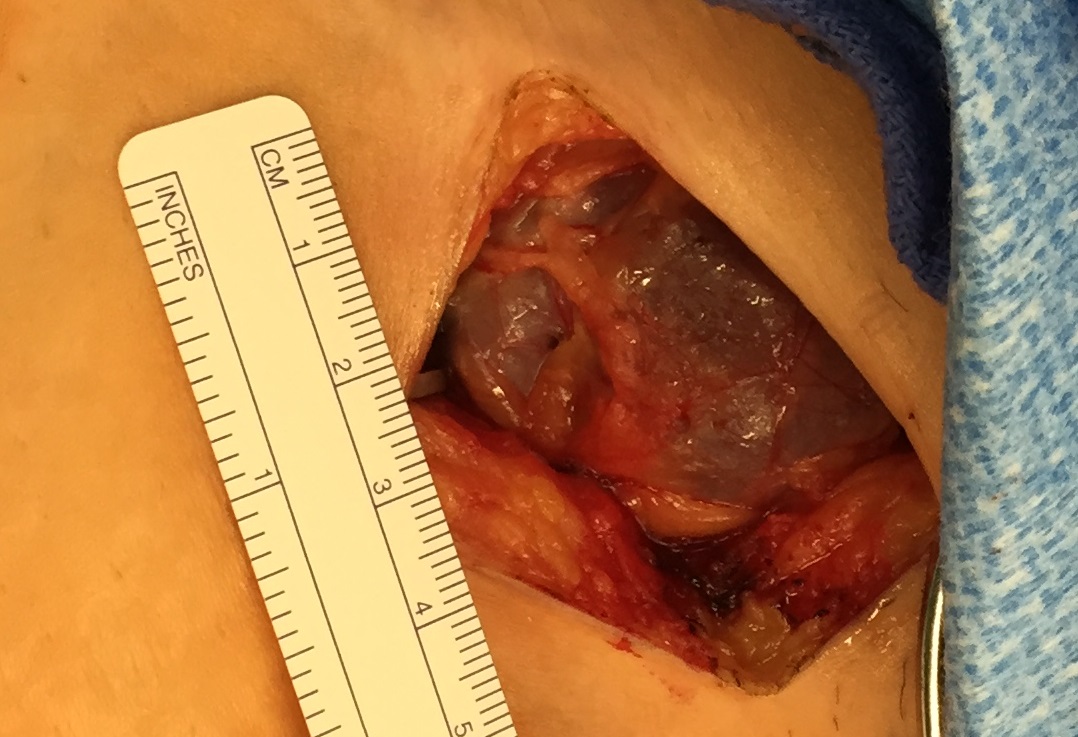Back to 2016 Karmody Posters
Venous aneurysm of the sapheno-femoral junction associated with recurrent venous stasis ulcers
Roy W. Jones, MD, Eduardo Rodriguez, MD, Brian D. Park, MD.
The University of South Florida, Wesley Chapel, FL, USA.
INTRODUCTION:
Venous aneurysms of the femoral veins are uncommon clinical entities. We present a case report of a true venous aneurysm of the saphenofemoral junction associated with recurrent venous stasis ulcers and a review of the literature.
METHODS:
We report a case of a 53 year old female with a right lower extremity venous aneurysm at the saphenofemoral junction associated with recurrent venous stasis ulcers. Her past medical history was significant for of obesity, severe chronic venous insufficiency (CEAP Clinical Classification 6), and refractory venous stasis ulcers of the bilateral lower extremities (present for 6 years). Preoperative venous duplex demonstrated severe venous insufficiency of the superficial and deep systems. Endovenous ablation was not attempted in the right lower extremity due to a prior failed attempt at left great saphenous vein intervention. During the high ligation of the right saphenofemoral junction, a 3x4x5cm aneurysm was encountered. Repair consisted of aneurysm resection, superficial vein ligation, dissociation of the great saphenous and anterior saphenous veins, and stab phlebectomy of large varicose veins of the thigh and lower leg. Pathology confirmed that this lesion was ectatic venous tissue consistent with a venous aneurysm. The patient recovered uneventfully and experienced complete healing of the venous stasis ulcer in several weeks.
RESULTS:
Venous aneurysms are uncommon, with a reported incidence in the literature of 0.007% for deep system venous aneurysms of the lower extremity. Known symptoms of lower extremity venous aneurysms included pain, swelling, and deep venous thrombosis (DVT). However, no previous reports have described an association between lower extremity venous aneurysms and refractory venous stasis ulcers.
CONCLUSIONS:
Venous aneurysms of the lower extremity are rare and are uncommonly associated with significant symptoms. Repair is indicated when these aneurysms are associated with significant venous insufficiency.

Back to 2016 Karmody Posters
|







